Talents: Sel Kofiga, The Slum Studio
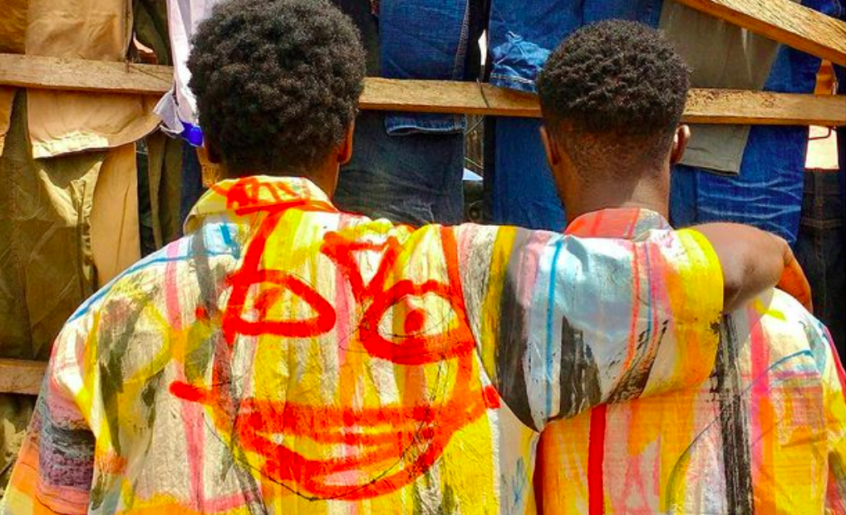
The Slum Studio – IG @theslumstudio – is a Ghanaian brand that creates wearable art pieces with clothing waste sourced in Accra. Its model of sustainability applies circularity, regeneration, and ethical standards to art-making and is informed by a reflection on human geographies and the socially-produced nature of space. The garments are material maps of multiple journeys and the realities that they come aross and contribute to shape.
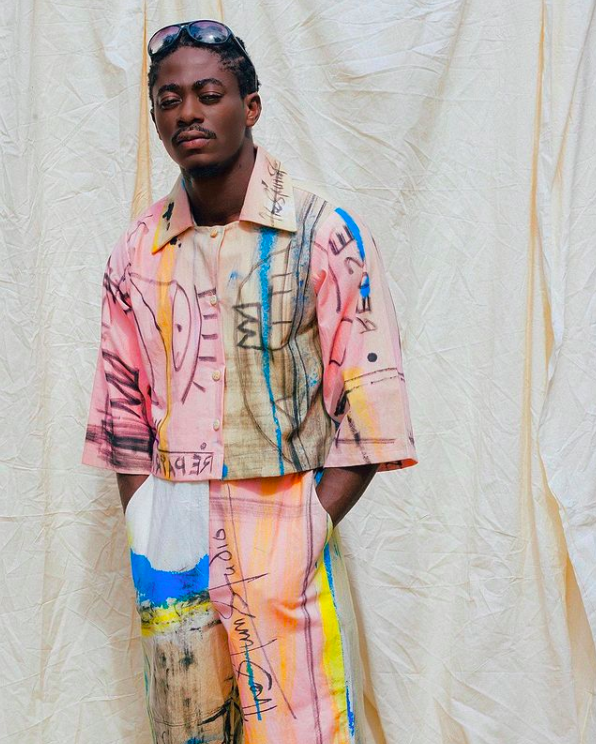
The Studio’s web page reads: “The Slum Studio analyses the forms of dialogue between spaces, reciprocal inspirations, collaborations and as a process visually repurpose’s and give old fabrics a whole new life and meaning with natural pigments and fabric paints”
I interviewed its founder Sel Kofiga for the research project on cultural sustainability and fashion digitalities in Africa that I’m conducting at the University of Bologna. Sel is an Accra born and based multidisciplinary artist, who explores issues of power and representation in the contemporary human space with performances that challenge the status quo. On his personal page he writes that his efforts aim at “express[ing] and liberat[ing] the circles from within the boundaries of social constructs”.
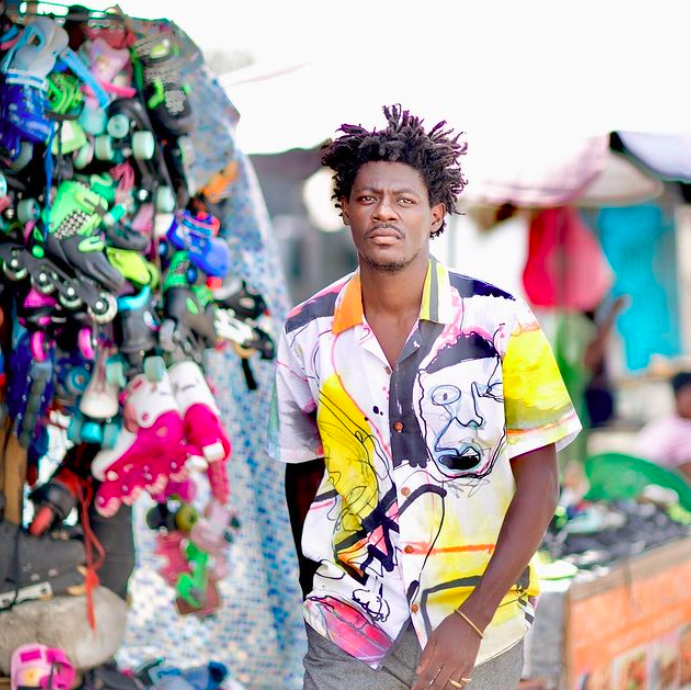
What is the story of The Slum Studio?
The Slum Studio is a multi-faceted brand which uses unconventional mediums to explore the narrative of identity, politics of clothing and representation through fashion. In an attempt to engage with the already ongoing narrative about second hand clothing business in Ghana, I attempt to document the many hands through which the product in question travels and affect our immediate spaces and the people.
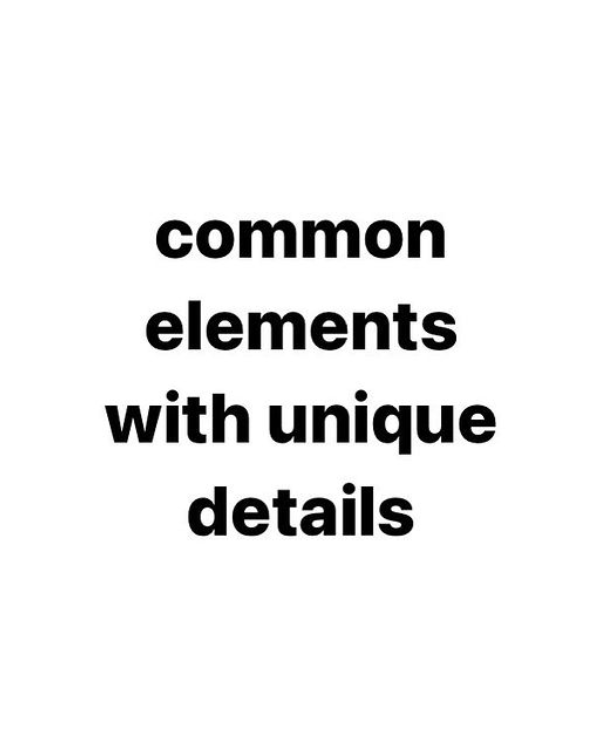
What is your mission?
My mission is to constructively retell THE story from my perspective. A perspective that has a lot to do with my personal history and relationship with second hand clothing importation.
Where do you source your materials?
90% of my fabrics are sourced from the numerous second hand clothing markets in Accra, the capital of Ghana. These fabrics come from UK, USA, Germany, Korea, China etc as offcuts, used and store rejects. I collect white and off white cotton fabrics which I later take through the process hand paint and stamping with stories captured from the markets to recreate The Slum Studio apparel.
What does sustainable mean to you?
The nature and conceptualization of public space and life have been always associated with collective participation and socialization, and this to me means that each and every one through whatever contribution they offer to society plays an important role in how the use of space and objects come to play in our daily lives. In this I mean to say that sustainability is about usage and how this usage is able to maintain an ecological balance that shapes the future of our lives, economy and environment. This has a lot to do with consumption and disposal.
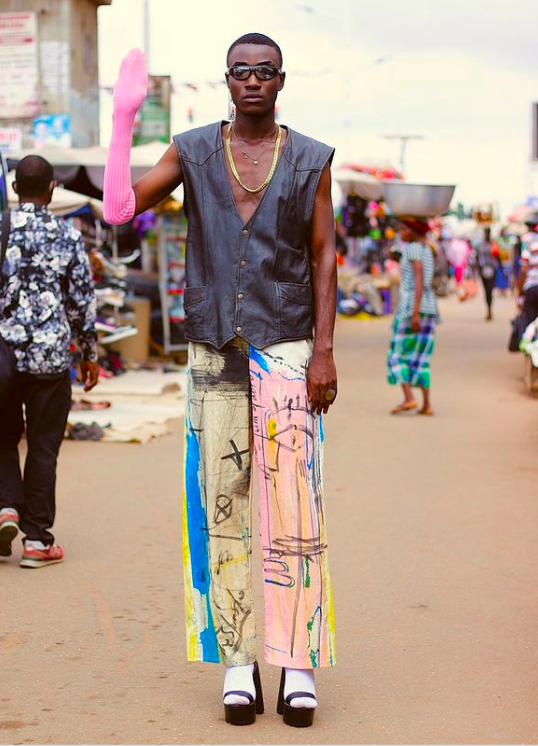
What is the culture of sustainability like in Ghana, and how have consumers responded to your brand?
The culture of sustainability has been with Ghanaians since the day of time, our parents and grandparents lived it with pride through many mediums which fashion and clothing practices was/is just one of. Today this word many others have evolved and reinvented itself through our attempt to reconstruct what was and what is to become. Our spatial and experiential factors in the observation of social interaction with clothing practices and adorning the skin have shaped our own definition for this word and it is very interesting how far we have come with it. The Slum Studio has so far received good feedback, both positive and challenging and I am grateful for that. I believe dressing and dressmaking as a basic fact of social life has become a medium which affects each and every one of us. It does more than just adorning our skins and that is what I find interesting with used/old as a concept of being. The ability to reuse something that carries reflections and traces of human imprints from the past. My work is basically commenting on this narrative through a medium which already exist. That is, art and fashion being two fields with outstanding innovation and endless creative expression within the framework of design. This is not new, it has been a thing and it will always be. I am not just creating unique wearable art through stories but also I am also referencing an old technique. The technique which is the many different forms, designs and style of Ghanaian and West African cloth making practice where traditional folklore, adages and social lives are free hand painted or stamped onto cotton fabrics with natural dyes.
Africa receives a huge percentage of the world’s used clothes and the debate on whether this is detrimental to the local fashion industry has been going on for a long time. As a brand promoting a circular economic model, where do you stand on this?
I would like to quote Okwui Enzewor on something he once said, and then add my perspective as to what the words local and industry comes to play in this narrative. He said and I quote: “The relation between the politics of resources and second hand goods shipped from the west to Africa is an important one. There is a notion that Africa should always be the destination for the obsolete, for the outmoded, for things that have outlived their usefulness. But I think that the idea of recycling is very, very important, because what Africa can teach us is how that things can find new lives and new forms through ingenious means. The politics of recycling have to become part of our discourse within the framework of design”
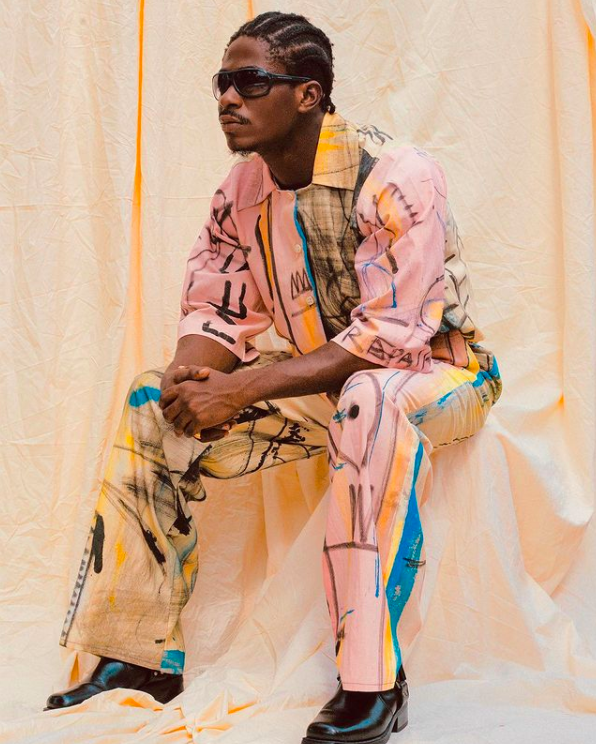
The fashion industry evolves and keeps on developing significantly through creativity and innovation, satisfying the criteria of both aesthetic design and utility to both the locals and outside consumer. In this regard, the local who becomes a collaborator through her/his skill set and conceptual imagination is offered many options of using what is already in the space to build upon, and this later becomes manifestations of art, culture, symbolism, color, style, composition, design and way of life. Globally, we all know the politics involved in how the West’s mass production has for a long time underdeveloped not just African fashion but the economic growth of the continent as a whole simply because our space is seen as a dumping site. No, it is not about charity or help. It is a business and economic strategy which locks us into the idea of need and over dependency on the West. This indeed is worrying but also gives us a reason to find out what we could do to collectively challenge the narrative and tell the story through our own lens. My 1% contribution is a call out to let others realize how important it is to look out for numerous ways of constructively engaging this problem.
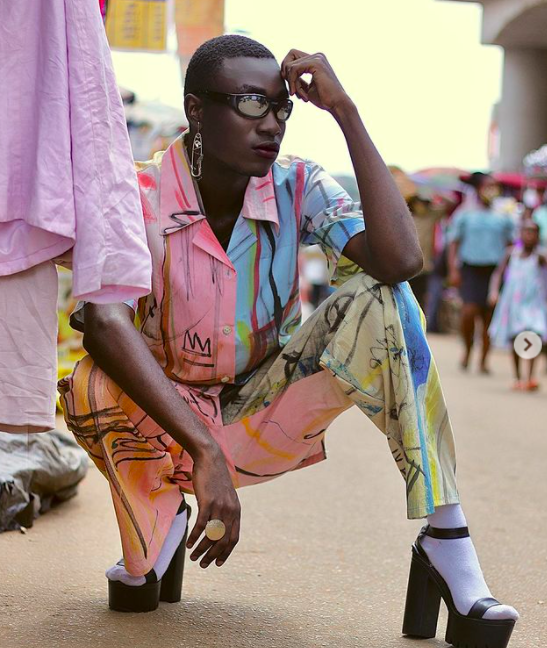
How important have social media been to you?
Social media have been a helpful portal. In this time age I think we have to be very grateful for internet, for how it connects people from all walks of life. Particularly during this pandemic, it has helped me tell and share my story to my immediate space and the outside world.
How do you think sustainability could be “socialised” and made relevant for communities who have been fed a fast fashion diet for decades?
The West has a bigger responsibility in making sure they have control over their mass production and overconsumption. We equally have a responsibility as a community to educate each other on the fast fashion diet, about how harmful it is to our immediate spaces and environment. A lot of us are complicit, even in our attempt to produce what we deem sustainable. All of us must do the work. We really can’t just be over consuming our way to a sustainable world thinking that’s the way forward, it is not. I believe mediums like music, film, art, architecture and all the other things we connect etc. could be some of the best ways we can channel this education through. We must go back. Africa is so huge, and so diverse with rich textile industry from all corners of it. I mean rich locally made textiles which are very sustainable, environmentally friendly and affordable. We must use all the amazing ideas and technology we have acquired now to reconnect with the past on how to make it the African way, the most sustainably African way possible. I think that is how we can really bring inclusivity, collectiveness and socializing into the work we want to do.
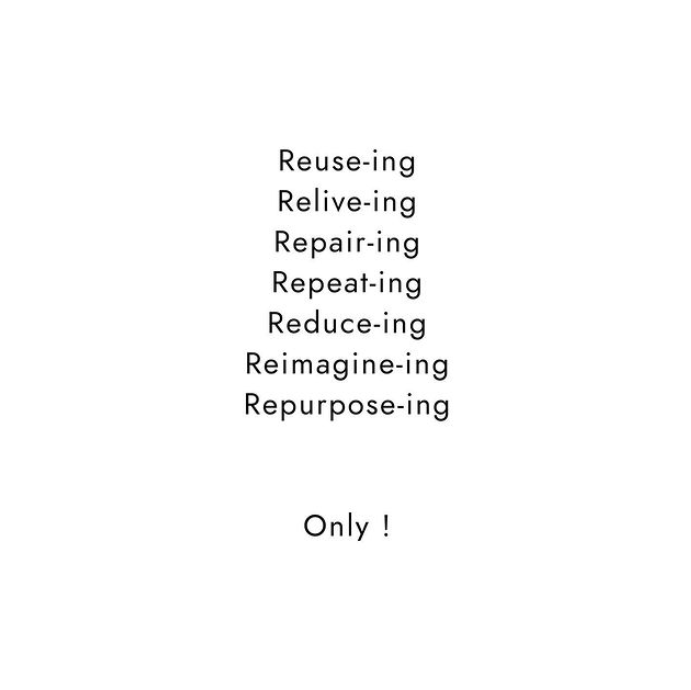
What’s next for The Slam Studio?
It excites me that when it comes to art and fashion, there are limitless opportunities one can explore, experiment and hopefully execute. The work is in the living. There are definitely a lot in the works, and our urge to involve inclusivity and the communal collaboration would definitely help us come up with not just exciting but ethical and circular ideas about how to engage with our space in the best way possible.
The future is about creating to leave room to create upon.